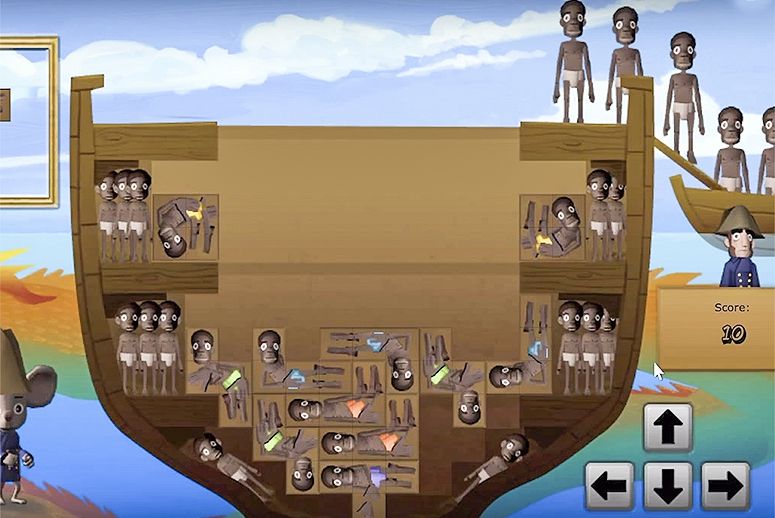As an English scholar who studies video games, I am fascinated by the term “ludonarrative dissonance” or
the idea that when a game tells the player one thing through its story and environment, and then contradicts it though gameplay, the player becomes unimmersed and disconnected from the experience to a degree.
As a critic, I am less interested in the degree to which a player is immersed or absorbed into a game (the degree to which the spell the game casts over the player holds over the course of play) and more interested in the unique effects and meanings that a perceived contradiction between game mechanics and narrative can create.
For example, BioShock Infinite was accused of ludonarrative dissonance by those who feel that the critical stance towards racism and classism that the game initially takes is offset by the game’s extreme and repetitive violence. The mindlessness of the “kill everyone so that you can move on to the next story point” game structure, these critics argued, undercut the thoughtfulness the game advertised as its most alluring feature.
Politics. This was supposed to be a game about the nuance of fundamentalism, exceptionalism, Occupy and some other slurry of ideals I can’t hear over the noise of my own bullet-addled grunting. We’re at the war museum. I cannot recall ever having lost my place in a narrative before, but I barely grasp my relationship to this man, Slade, or something. I’m so busy killing I can’t hear him talk to me, either.
…
We confront Slade in some kind of racist museum tour; all of Infinite is a racist museum tour. I’m sure someone has said this before, although I’ve insulated myself from any games writing on Infinite until now so as not to bias myself, but it’s the Quentin Tarantino school of social issues — present a world full of prejudice so you can feel progressive, “adult,” for using racial slurs. This strikes me dull. I’m insulted. It’s opening a wound just so we can feel that it hurts, and then leaving it there.
However, I believe that a more interesting reading is the one that takes into account the gruesomeness of the game as a kind of critique of the version of civil rights activism preferred by middle class whites: the one that over-emphasizes only the most pacifist statements of Martin Luther King Jr., the one that responds to black folks who are protesting police killings of unarmed children by calling the protesters “thugs.” In other words, I argue that BioShock Infinite is only guilty of “ludonarrative dissonance” if one takes for granted a set of preconceived notions about what protests are “supposed” to look like. The violence in the game makes us uncomfortable because it is supposed to. Revolutions are supposed to be uncomfortable.
Another fascinating reading focuses on Booker DeWitt and how the manifestation of his white guilt for the awful actions he took as a soldier takes the form of hypocritical self-righteousness mixed with thinly justified violent outbursts.
The violence witnessed in Columbia is excessive because it has to be — when his blood is up and enemies are at their weakest, Booker carves them up in unbelievably horrific ways. He expresses a dissatisfaction with his history of combat, and yet is frequently reminded by other characters that, deep down, he’s a cold-blooded killer. Even as Booker protests, he’s being fed victims by the likes of Slate and Fink, who set out to prove he’s exactly the man he claims he’s not.
Booker’s claims of regret ring hollow when he’s mashing faces to pieces with his whirly claw of death — and they’re supposed to. His entire story is one of denial, of claiming he’s better than those around him, and ultimately, devastatingly, being proven wrong. That first time he gladly grinds a spinning metal claw into somebody’s face is the first clue that Booker’s claims of putting his past behind him are bullshit.
Similarly, I have been thinking a lot lately about the Slave Tetris game that was pulled from the education games compilation Playing History: Slave Trade 2 earlier this year.
According to Ars Technica,
The mode, which can still be seen in Let’s Play videos captured before the game’s update, flatly asked players to stack dead-eyed African bodies that had been squished into uncomfortable Tetris shapes into a slave ship. (The mode’s instructions included an oddly rhetorical question: “How come the slave traders were so inhumane?”) Players didn’t try to “clear” the board by creating full lines; instead, they accumulated points for fitting more bodies onto the ship before reaching its top line. The mode concluded with an informational note about slaves being “packed to use every square millimeter.”
This game looks like an extreme example of ludonarrative dissonance in that it describes itself as an attempt to educate players about the horrors of slavery even as its game mechanics subject black bodies to dehumanizing cruelty.

Without defending the game’s creators (who I think are more than likely simply insensitive and clueless, looking to cash in with a clone of a beloved game wearing a social justice skin), I think a more interesting interpretation of the game is one that reflects on the way that white discourse about racism often uses black bodies as props, the way that we expect black bodies to contort themselves to make white folks feel at ease when discussing issues of race.
I don’t think this message was “purposefully” encoded in the game by the developers; I don’t think they are that clever. However, I think that, accidentally, this game reveals something about how we (fail to) grapple with racism in the US, even when we are engaging with a text that is supposed to be explicitly teaching us about it. Our instinct, as a culture, is still to insist that black bodies bear the painful burdens of those conversations.
In that way, this game’s disgusting depiction of race relations is spot on.
